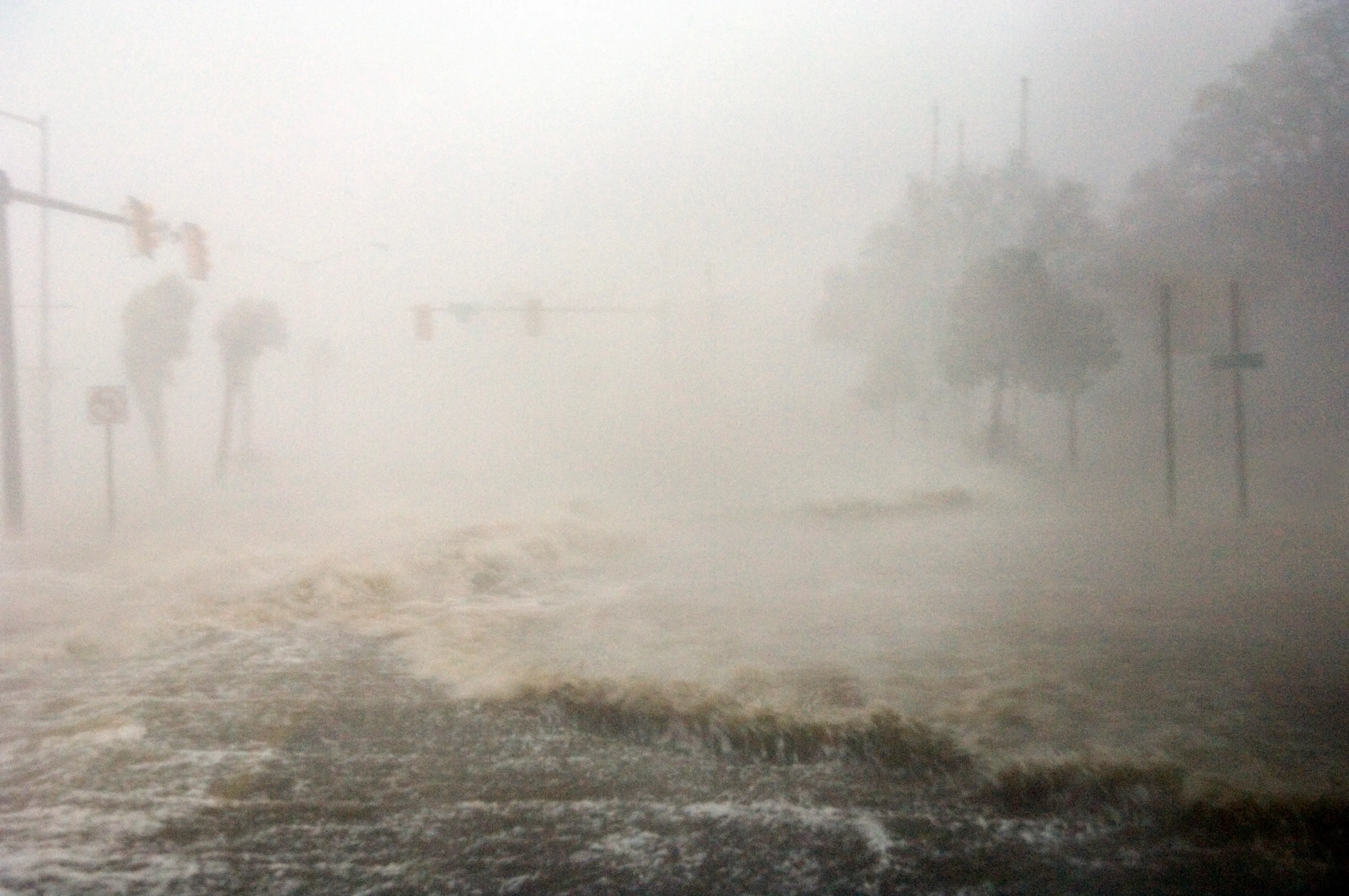What is Netflix’s Katrina: Come Hell and High Water documentary all about?
-
 Hurricane Katrina roars into Gulfport, Mississippi on the morning of August 29, 2005. Hundreds were feared dead along the U.S. Gulf Coast after Hurricane Katrina sent a wall of water into Mississippi and flooded New Orleans. (Photo by James P Reed/Corbis via Getty Images)
Hurricane Katrina roars into Gulfport, Mississippi on the morning of August 29, 2005. Hundreds were feared dead along the U.S. Gulf Coast after Hurricane Katrina sent a wall of water into Mississippi and flooded New Orleans. (Photo by James P Reed/Corbis via Getty Images)Nearly twenty years after Hurricane Katrina, a new Netflix documentary is bringing the story back into focus. Katrina: Come Hell and High Water takes a deep look at the 2005 disaster that devastated the Gulf Coast and left an unforgettable mark on New Orleans.
The film goes beyond the headlines. It tells the story through the voices of survivors, rescuers, and reporters who were there. With rare footage and personal accounts, it explores not just the storm itself, but the human strength and struggles that followed.
Hurricane Katrina hit the Gulf Coast in August 2005
#hurricanekatrina #HurricaneKatrinaRaceAgainstTime #bush #KanyeWest this the history that they’ll tell you to get over in the future, this is the history they’ll swear to you never happened. They never taught us this in school. And yall called Kanye crazy pic.twitter.com/pxMvfHwXsu
— j^¥ (@jAy_22k3) August 11, 2025It quickly became one of the deadliest and most destructive hurricanes in U.S. history. New Orleans suffered the most damage when its levee system failed, flooding large parts of the city.
More than 1,800 people lost their lives, and hundreds of thousands were forced from their homes. The storm caused billions of dollars in damage. But it also revealed deep problems in emergency response and preparedness, especially for the most vulnerable communities.
The documentary revisits these moments with a mix of archive video, news reports, and interviews. It captures the panic of the early hours, the chaos in flooded streets, and the slow, painful recovery that took years.
What the documentary shows
Katrina: Come Hell and High Water isn’t just about the storm’s power — it’s about the people who endured it. Viewers hear from residents who escaped on boats, families who waited on rooftops for help, and first responders who risked their lives in dangerous conditions.
The film also examines the failures in leadership and the delays that left many without food, water, or medical care. It asks difficult questions about how race, poverty, and politics affected the way help was given — and who was left waiting the longest.
By focusing on personal stories, the documentary paints a picture of both heartbreak and resilience. It shows how communities came together to rescue each other when official help was too slow.
Why this story still matters
Even after two decades, the lessons from Hurricane Katrina are still important. The disaster changed the way the country looks at emergency planning and disaster response. It also forced hard conversations about inequality and who gets help first in a crisis.
For survivors, the pain is still there — but so is the pride in how they rebuilt their lives. The film honors that spirit while reminding viewers that the next major disaster could test the same systems all over again.
Katrina: Come Hell and High Water is more than a history lesson. It’s a tribute to the lives lost, the families who rebuilt, and the communities that stood together.
With its powerful mix of voices and visuals, the documentary is both emotional and eye-opening. Whether you remember the hurricane or are learning about it for the first time, it offers a clear, human look at one of America’s most defining tragedies — and the strength it takes to survive.
TOPICS: Hurricane Katrina, Netflix
- What did General Honoré do during Hurricane Katrina? Revisiting heroic response to devastating storm amid the 20th anniversary
- HBO announces a Katrina Babies documentary on children affected by Hurricane Katrina
- Apple TV+ orders Hurricane Katrina hospital aftermath limited series from John Ridley and Carlton Cuse